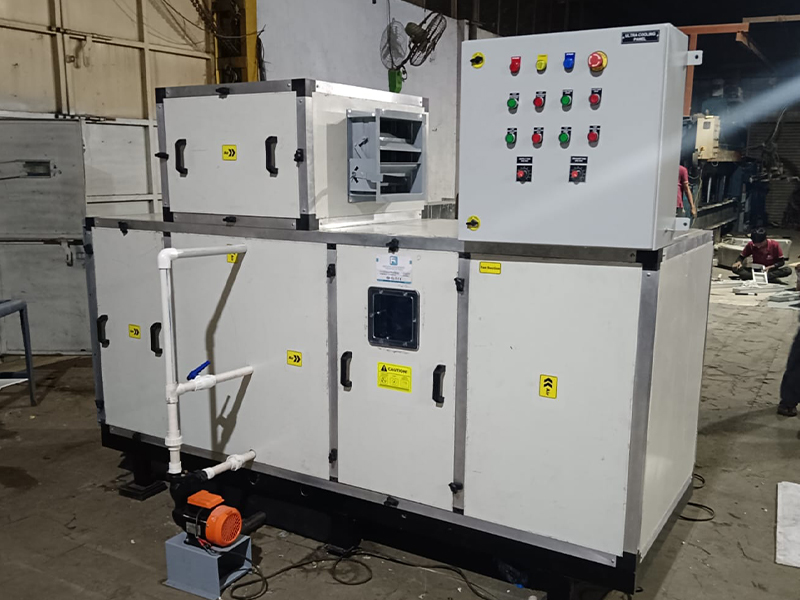
Two Stage Air Cooling Unit
Two Stage Air Cooling Unit
Product Description
- A Two-Stage Evaporative Cooling system is an advanced and energy-efficient cooling solution that combines both Indirect and Direct Evaporative Cooling technologies. In this system, water and air travel in separate channels, allowing for effective cooling without adding moisture to the air during the first stage. This makes it an ideal cooling option for large, open, and semi-open industrial spaces where conventional air conditioning is impractical. The Two-Stage Evaporative Cooler is especially suited for hot and dry climates, such as those found in India.
Highlights of the Product
- Indirect Evaporative Cooling (IEC) Stage: In the first stage, hot air and water move through separate channels in a polymeric heat exchanger. Heat is transferred without adding moisture, delivering cooled air.
- Direct Evaporative Cooling (DEC) Stage: In the second stage, the cooled air passes through a water-soaked pad for further cooling, adding minimal moisture.
- Cross-Flow Plate-Type Exchanger: The heat exchanger used is a cross-flow, plate-type polymeric design that ensures efficient heat transfer without direct contact between air and water.
- Dry Cooling Option: The system delivers cool air with no added moisture in the first stage, making it a dry evaporative cooling solution.
- Best for Large Industrial Spaces: Ideal for environments like industrial kitchens, food processing areas, and other large spaces that require high volumes of cool, fresh air.
Advantages
- Energy Efficiency: According to American Society of Heating, Refrigerating, and Air-Conditioning Engineers, two-stage evaporative coolers use 60%-75% less electricity than traditional refrigerant-based air conditioning systems, making them an environmentally friendly option.
- Lower Humidity: Unlike direct evaporative coolers, which deliver air at 70%-80% relative humidity, two-stage systems provide cooler indoor air with lower relative humidity, offering greater comfort.
- Cost-Effective Alternative: These systems are significantly more affordable in terms of both installation and operational costs compared to standard AC systems.
- Ideal for Hot and Dry Climates: Particularly effective in climates like those found in India, where high temperatures and low humidity levels prevail.
- Positive Pressure Management: Perfect for applications that require positive pressure environments, such as food processing facilities and industrial kitchens.


